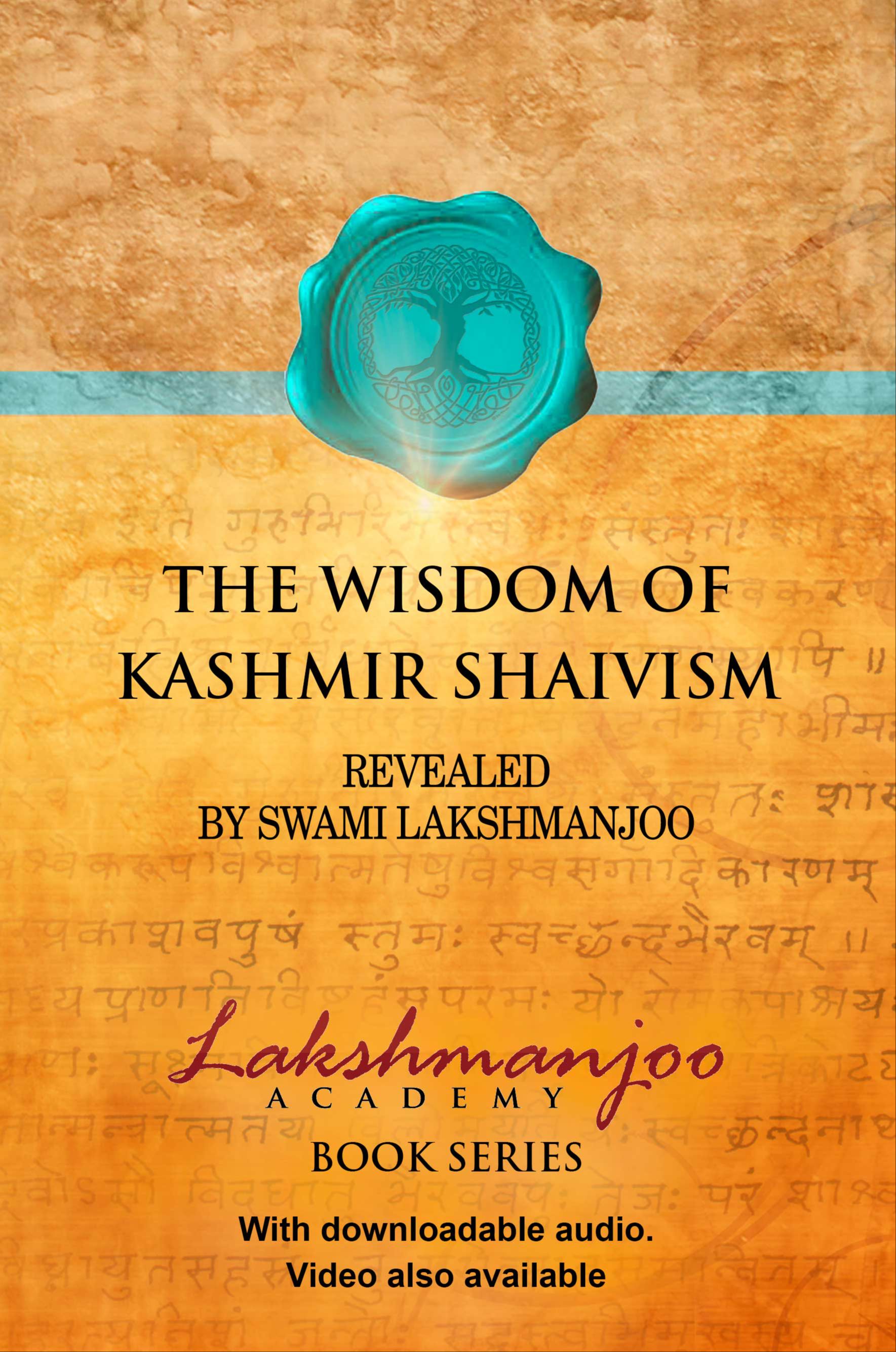
A clear and unique explanation of the much-discussed term “maya” (illusion) in the light of Kashmir Shaivism as Swami Lakshmanjoo reveals to us how we have become limited being.
This is an excerpt from Abhinavagupta’s Paramarthasara: The Essence of the Highest Reality.
View on YouTube or listen to the audio below…
PS DVD 1 (00:55:10)
मायापरिग्रहवशाद्
बोधो मलिनः पुमान् पशुर्भवति ।
काल-कला-नियतिवशाद्
रागाविद्यावशेन संबद्धः ॥१६॥
māyāparigrahavaśād
bodho malinaḥ pumān paśurbhavati /
kālakalāniyativaśād
rāgāvidyāvaśena saṁbaddhaḥ //16//
Bodha means sarvajñatva sarvakartṛtva māyo’pi’bodhaḥ. Bodha, God, is capable of all-doing (sarvakartṛtva), capable of all-knowledge (sarvajñatva), all-knowing, but māyā parigraha vaśād, He, by His māyā parigraha, by māyā svīkārena, He asks māyā to overwhelm My bodha.
DENISE: What does that mean?
SWAMIJI: To subside My bodha. I want to have My bodha subsided by māyā.
DENISE: What is bodha? My greatness?
SWAMIJI: My all-knowing energy and all-doing energy, I want to subside it [laughter].
And by inviting that māyā to attack Him so that He will not be capable of all-knowing and all-doing, parigraha vaśāt, He becomes the slave of māyā.
Pāratantrībhūtatvāt, and He becomes paśu, He becomes the individual soul afterward. Paśu means māyāyāḥ pālyaḥ–māyāyāḥ pālyaḥ pāśyaśc–māyā takes care of His livelihood, and māyā also binds Him in Her rope, so that He won’t go ahead and ask for returning again to the Parabhairava state. He is stuck, He is stuck with māyā.
Kāla kalā niyati vaśāt.
Kāla, kalā, niyati, rāga, and avidyā, by these He becomes entangled46.
Kāla entangles Him so that He will not become eternal, He will not be eternally existing. There is a period [of His existence]. Kāla means He is only in the present. In the past, He won’t exist; in the future, He won’t exist. In the present, He will exist. Kāla means [His] eternity is subsided and He becomes limited in the cycle of time; He has become the slave of time.
And He is kalā.
Kalā means [that His] all-doing action has subsided and He has taken the position of kalā, only some limited action.
Niyati: He is all-pervading, and, by this limitation, He pervades only in the United States in His own house. He is nowhere [else] found. Otherwise, He was everywhere found.
Rāga: He was pūrṇa, He was full, without any wanting, and He is full of wants now; He needs, He needs things. He finds there is a gap [in] Me [and feels/says], “I want this, I want this, I want this.” Rāga is wanting for everything. There is wantage. Do you know wantage?
“Do you want a pot?”
“Yes, I want a pot!”
“Do you want a duster?”
“Yes, I want a duster!”
“Do you want gloves?”
“Yes, I want gloves!”
It is . . .
DENISE: Never-ending.
SWAMIJI: No.
. . . it is an attachment for everything, it is a desire for having everything.
Niyati means the desire for having only a particular thing. That is niyati. “I want, bas, another suit. Bas, that is all, because I need another suit.” That is niyati.47
And avidyā: avidyā means limited knowledge. Unlimited knowledge is finished; limited knowledge is there.
By this, He is saṁbaddhaḥ; saṁbaddhaḥ means He has become a limited being.
END Paramārthasara DVD 1 (01:01:17)
––––––––––––––––––––––––
46. “Directly, universal consciousness can never travel to individual consciousness unless universal consciousness is absolutely disconnected. Māyā is the disconnecting element from God-consciousness. Kalā (limited action) is connecting element to that dead being in some limited thing. So he does something by kalā. When he does something, then individuality shines. Otherwise, direct from God-consciousness, individual consciousness would never come in existence.” Swami Lakshmanjoo, Tantrāloka 9.175-6, USF archive.
“Kalā, vidyā, rāga, kāla, and niyati are the limiting connecting rods [between the individual and God].” Swami Lakshmanjoo, Tantrāloka 9:257, USF archive. For a further explanation of the ṣaṭ kañcukas (the six coverings), see Kashmir Shaivism–The Secret Supreme (Universal Shaiva Fellowship, Los Angeles, 2000), 1:7,8.
“[The five pure states of Lord Śiva] take the formation of ṣaṭ kañcuka in the individual. Because, whatever is manifested in the universe, it is not manifested [as] other than Śiva. The same thing has come out in manifestation; the same thing what existed in Paramaśiva, that same thing is manifested outside also.” Swami Lakshmanjoo, Tantrāloka 6:41, USF archive.
“Kalā, vidyā, rāga, kāla, and niyati, these five elements are just offsprings of, offshoots of māyā. Kalā means the capacity of doing something; vidyā means the capacity of knowing something; rāga means the capacity of some attachment, not universal attachment; niyati means the capacity of limitation of space; kāla means limitation of time.” Swami Lakshmanjoo, Tantrāloka 9.41, USF archive.
47. “SCHOLAR: So, niyati is that which attaches you to a particular situation.
SWAMIJI: Yes.” Swami Lakshmanjoo, Tantrāloka 6:153, USF archive.
Source: Abhinavagupta’s Paramarthasara: The Essence of the Highest Reality
revealed by Swami Lakshmanjoo.
All Content is subject to Copyright © John Hughes.






